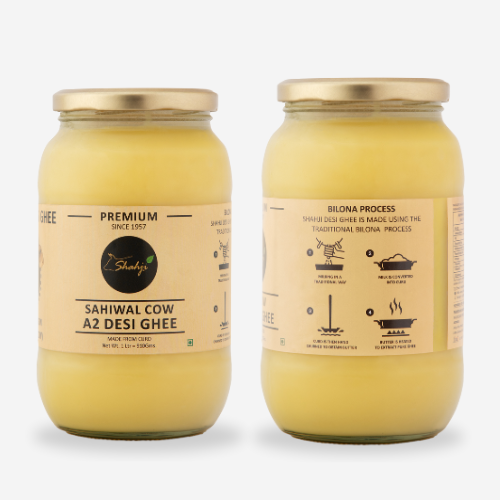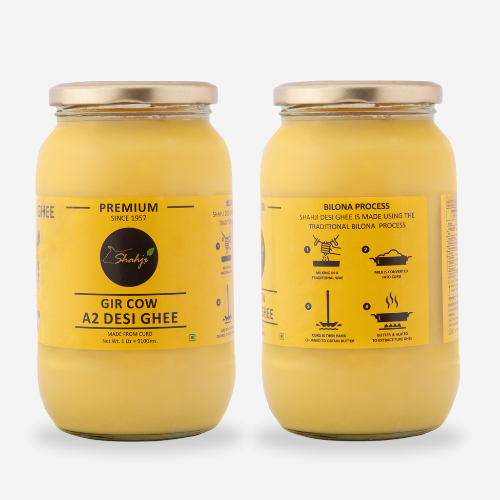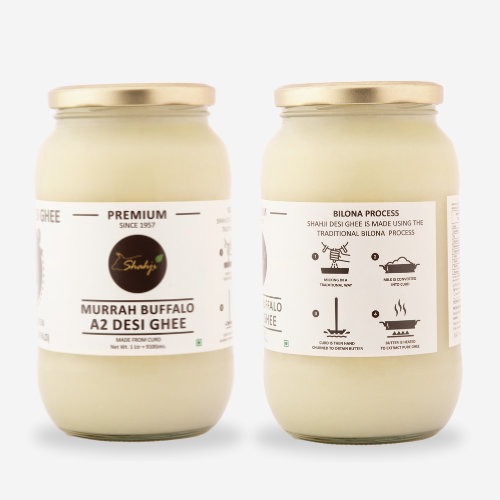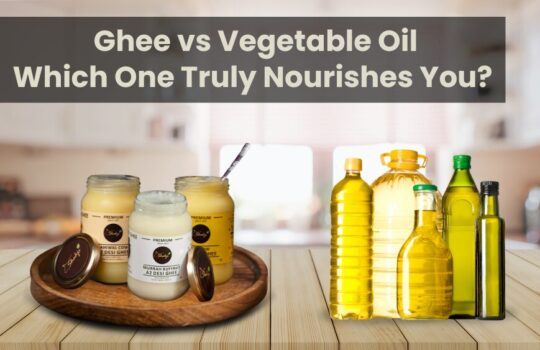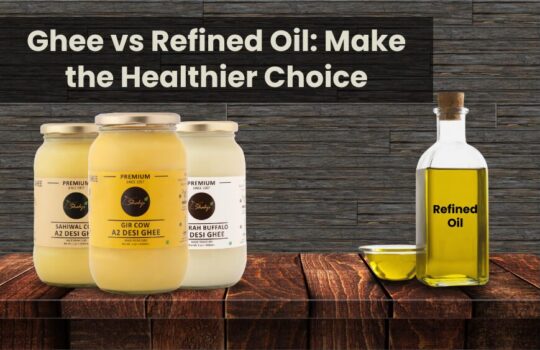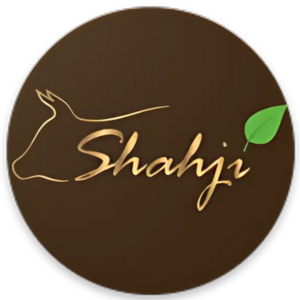Ghee Making Process: Step-by-Step Guide to Pure Ghee
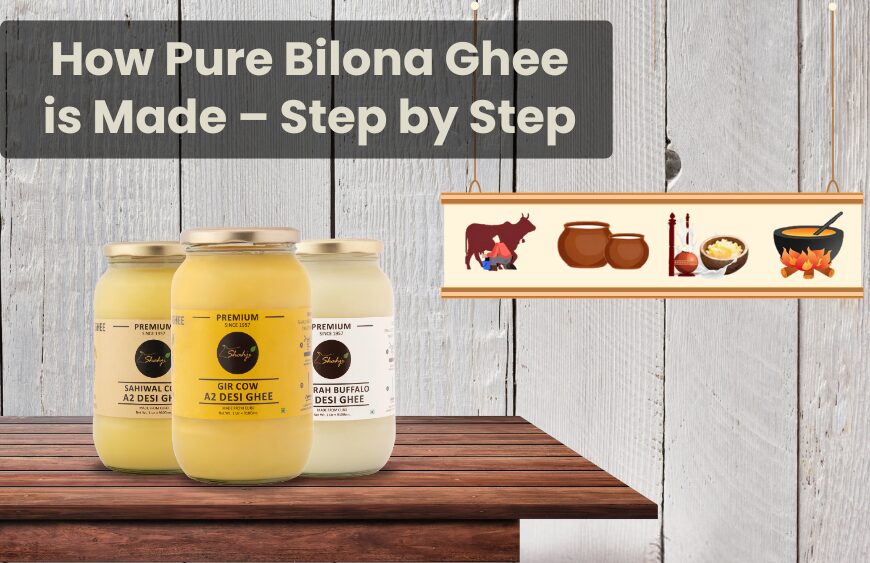
Ghee, known as liquid gold in Indian kitchens, has been revered for centuries—not just as a food but as a sacred healing agent in Ayurveda. Understanding the ghee making process helps consumers distinguish between artificial fats and authentic clarified butter that supports health and wellness. With increasing awareness around organic and traditional practices, the demand for pure desi ghee is surging worldwide.
Step 1 – Ethical and Hygienic Milking
Everything begins with the cattle—the quality of ghee heavily depends on the milk used. At Shahji Ghee, we use milk from grass-fed, indigenous breeds like Gir and Sahiwal Cows and Murrah Buffaloes, known for their high nutritional profile. Cows and buffaloes are milked twice daily in a calm, stress-free environment.
Key elements:
- Use of sterilized containers
- Trained handlers for hygienic milking
- Immediate chilling to preserve freshness
- This ensures that only the best-quality raw milk enters the next stage of the ghee making process.
Step 2 – Boiling Fresh Milk
Once collected, milk is boiled to eliminate pathogens and improve its shelf life. Boiling also helps in converting lactose to a more digestible form. While traditional methods use earthen pots and firewood, Shahji Ghee uses stainless-steel vessels to ensure no metallic contamination.
Step 3 – Cooling and Curdling the Milk
After boiling, the milk is cooled naturally. A spoonful of curd from a previous batch is added to initiate natural fermentation. This slow fermentation overnight leads to the development of rich, creamy curd—a vital base for quality ghee.
Time & Temperature Control:
- Curdling time: 8–10 hours
- Ideal temperature: 25–30°C
Step 4 – Churning the Curd into Butter
The curd is churned using the Bilona method, an age-old Indian practice involving wooden churners. This separates makhan (butter) from matha (buttermilk). Unlike electric mixers, this method preserves the nutrition and aroma of butter.
Step 5 – Clarifying the Butter to Make Ghee
The butter is then slowly heated in a thick-bottomed vessel. As it melts, the water content evaporates, and milk solids begin to separate. The golden liquid left behind is pure ghee, characterized by its rich aroma and grainy texture.
Pro tip: Overheating destroys nutrients; hence, timing and temperature are key.
Step 6 – Filtering and Cooling the Ghee
Once clarified, the hot ghee is filtered through fine mesh to remove milk solids and impurities. It is then cooled gradually to retain its granularity and consistency—hallmarks of high-quality ghee.
Step 7 – Bottling and Packaging
The final product is bottled in glass or food-grade containers to prevent chemical leaching. Shahji Ghee uses vacuum-sealed jars with tamper-proof lids to ensure zero contamination during transit or storage.
Labeling includes:
- Batch number
- Date of manufacture
- Nutritional facts
Traditional vs Modern Ghee Making Methods
| Feature | Bilona Method | Industrial Process |
| Taste | Rich & earthy | Mild |
| Aroma | Strong natural | Slightly processed |
| Texture | Grainy | Smooth |
| Nutrition | Preserved | Partially lost |
| Cost | High | Low |
Importance of Cattle Feed and Environment
The cows’ diet plays a huge role in the ghee’s quality. Shahji Ghee sources milk from cows fed on:
- Organic fodder
- Herbal supplements
- Clean water
This results in A2 milk, ideal for making highly digestible ghee.
Health Benefits of Pure A2 Desi Ghee
- Boosts digestion by stimulating stomach acids
- Strengthens immunity with fat-soluble vitamins A, D, E, and K
- Supports brain function due to DHA
- Improves skin health when consumed or applied
Shahji Ghee’s Unique Approach to Ghee Making
What sets us apart:
- Sourcing from verified ethical farms
- Using Traditional Bilona Method
- Transparent processes with customer traceability
Frequently Asked Questions – FAQs
What are the methods of making ghee?
There are two primary methods of making ghee:
Traditional Bilona Method:
– Involves boiling milk, fermenting it into curd, churning to get butter (makhan), and then slowly clarifying it.
– Preserves natural nutrients, flavor, and texture.
Industrial/Direct Cream Method:
– Cream is separated directly from milk and then heated to make ghee in large quantities.
– This method is faster and cheaper but may lose some nutritional value and traditional flavor.
For maximum health benefits and purity, the Bilona method is superior.
Which ghee making process is best?
The Bilona method is considered the best and most authentic ghee making process. It involves fermenting boiled milk into curd, then hand-churning it to extract butter, which is slowly clarified into ghee. This traditional method retains essential nutrients, enhances aroma, and results in a grainy texture that signifies purity. It’s labor-intensive but produces the highest quality A2 Desi Ghee, ideal for health-conscious individuals and Ayurvedic uses.
Why is Bilona Ghee expensive?
Bilona ghee is more expensive because of the manual, time-consuming process and higher quantity of milk required. On average, it takes 25–30 liters of A2 milk to produce 1 liter of Bilona ghee. The process involves natural curd fermentation, slow churning, and careful clarification—all done in small batches. Moreover, it uses milk from indigenous breeds like Gir and Sahiwal Cows and Murrah Buffaloes, which produce less milk but offer superior nutritional value. The cost reflects the purity, nutritional richness, and ethical sourcing.
What type of ghee is best?
A2 Desi Ghee made using the Bilona method is widely regarded as the best type of ghee. It is sourced from indigenous Indian breeds like Gir, Sahiwal, or Murrah, whose milk contains the A2 beta-casein protein—known for its high digestibility and health benefits. This ghee is rich in DHA, vitamins A, D, E, and K, and is suitable for daily consumption, cooking, and therapeutic use. It’s especially beneficial for digestion, immunity, and skin health.
Conclusion: Why the Ghee Making Process Matters
The ghee making process isn’t just about converting milk into a golden liquid—it’s a blend of tradition, science, and devotion to purity. From ethical milking to the last seal on the jar, every step matters in ensuring that consumers get the healthiest and most authentic product.
At Shahji Ghee, we respect the ancient wisdom and fuse it with modern hygiene practices to deliver ghee that is pure, nutrient-rich, and sustainable. Trust us to bring farm-fresh ghee from cows and buffaloes to your kitchen with care in every drop.

